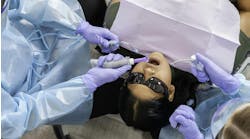by Marc Schlenoff, DDS, FAGD
Strategy is one of the basic tenets of business. It is a tenet, however, that few dentists consciously attempt to implement. What exactly is strategy? According to one definition, strategy is an integrated set of choices that positions the firm within its industry in order to create sustainable advantages relative to competition, as well as superior financial returns. In other words, strategy is about knowing where to play and how to win. Knowing how to use strategy to your advantage will become more important in the coming years.
In 1996, Michael Porter wrote an article in the Harvard Business Review called "What is Strategy?" which still resonates today. Porter makes the point that a truly successful, sustainable business must make informed decisions about how and where it will operate in the market. For dental practices, this means that hard decisions must be made about what market to target and how to capture it.
Every dentist must decide where to play in the market. There are several subsets of patient populations that must be approached differently. A strictly fee-for-service practice that caters to an upper-class population must present an image that is in sync with the expectations of an upper-class market. A higher volume, insurance-based practice needs to present a different image and have a different mindset because it operates within a different market. This is not a value judgment, as both populations need to be served; it is, however, the recognition that these two patient populations require different business models.
Once deciding where to play, it's time to decide how to win. Deciding how to win means choosing which capabilities and management systems are needed to create success. For example, the fee-for-service, upper-class practice would not be a candidate for advertising cost reductions or free services. In this case, the expectations of the dentists and those of the prospective patients would be mismatched. Another example is the office décor. A higher volume practice must consider a more functional approach to décor and furnishings, thinking more about preventing wear-and-tear than achieving an upscale image. Consider the glamorous lobby of a Ritz-Carlton hotel versus the functional lobby of a Holiday Inn hotel. Both lobbies serve their function, and both are needed, but the markets that they serve require different systems for success.
Treatment planning is a perfect example of the two components of strategy. Obviously, it is our duty as dentists to present our findings and recommend the needed treatment, regardless of the patient population being served. What differs is the approach taken. If you choose to play in a demographic without a significant amount of discretionary income, your "how to win" plan might include phased treatment, third-party financing, and the creation of value for the dentistry. In other words, you must make strategic decisions so that your patients can take advantage of the capabilities and systems that are in place in your practice.
In many geographic areas, almost every street seems to have a dental office. In order to survive - and ultimately prosper - you must create a competitive advantage for your practice. This, in turn, must be the result of a sustainable strategy that is well executed but that retains enough flexibility to be innovating all of the time. Implementing this type of strategy requires tradeoffs; doing more of one thing will, in turn, mean doing less of something else. The key is to develop the strategy based on the needs and wants of the target patient population. One size no longer fits all.
Dr. Marc Schlenoff, DDS, FAGD, is the president of MDS Dental Solutions. He helps young dentists successfully transition into the dental profession and raises the level of execution in established practices. He is also a practicing dentist on staff at Morristown Medical Center. Reach him at 973-886-7192 or at [email protected].





